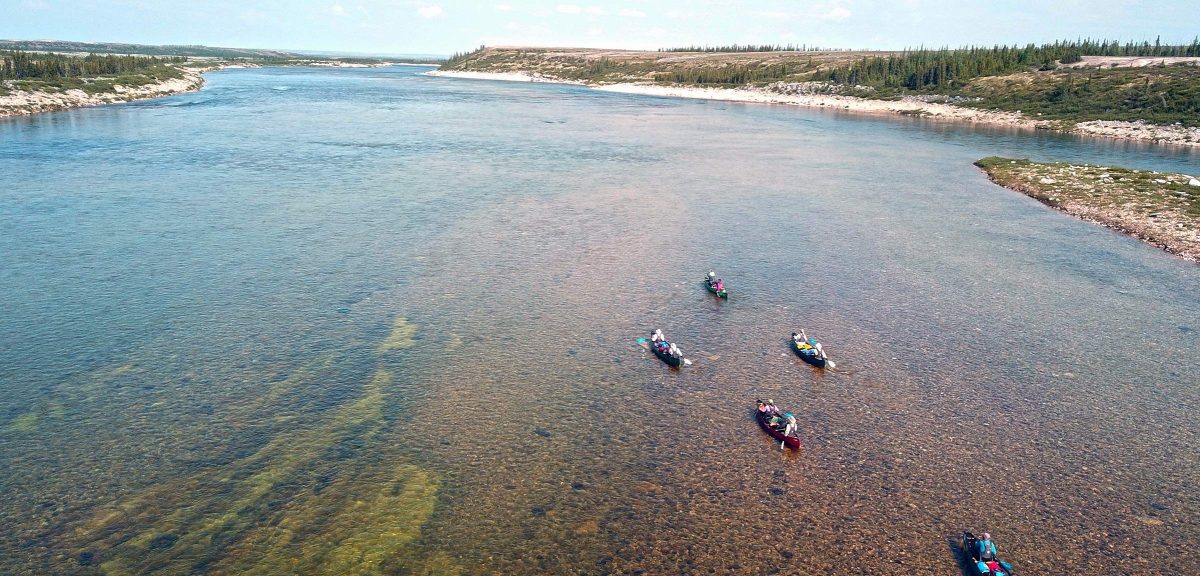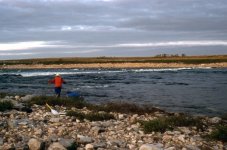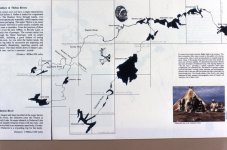(
Thanks, wjmc. I should have known this, particularly since I also know of a group that flew in below the Elk River Falls. If one takes out just after Eyeberry Lake, not too many rapids and portages exist. I apologize for accusing the writer of not being on the Upper Thelon, which between Lynx Lake, where Kathleen and I began in 1993, has many rapids and portages before the confluence with the Hanbury River.
I believe the capsize in question likely occurred above the confluence with the Mary Francis River. Below is from our diaries. As you can see, we are always very cautious. Mistakes, particularly when all alone, can be serious.)
We continued to travel fast, passing more mapped, submerged rocks, and I began to look forward to an early camp, perhaps 5:00 or maybe even 4:00 pm. The map suggested a back-eddy opposite the Mary Francis River that might provide a sandy beach.
By 2:00, the wind quickened, and the rocks sat defiantly above the water, flanked by ledges jutting out from both sides of the river. Scouting became necessary, and the constant vigilance inserted tension into what had been a lackadaisical day.
On most rivers we have run, the safest route generally exists on the inside bend, which usually has slower water flanked by an eddy. Outside bends stack the flowing water in larger, standing waves, and may have sweepers jutting out from undercut banks. On the Thelon, however, inside bends are often the least safe. The shallower water reveals more rocks, and ledges extend further from shore. The outside bend exhibits fewer rocks, and usually provides enough room to avoid the high standing waves.
Not always, however. As we approached the next bend, ledges obviously extended from both banks, nearly meeting in the middle. We beached, and scouted from a low ridge above the chute.
"Heck, all we need to do is line up, and hit the down-stream V."
"Those waves below the ledge are just haystacks
."
"We can run this."
We ferried out, headed for the "V," and then noticed for the first time a large rock, hidden behind a flashing wave. We side-slipped right, perilously close to the ledge, avoided the rock, side-slipped left, and hit the "V."
"Oh, my God, these may be just haystacks, but they're awfully big." We braced with all our strength, hoping to exit upright. It seemed we were held in place by the standing waves, forever suspended in the brace position. Would we remain here until freeze-up, at which time we could walk across the haystacks to shore? Eventually we emerged from the white rollers, and congratulated ourselves for having taken the time to wear our spray skirts, stretched water-tight over the piping on the spray deck."
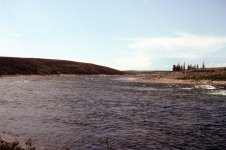
Only two more ledges before the Mary Francis River and the anticipated white sand beach. We lifted over the first ledge, a short portage of 50 m.
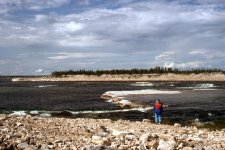
We avoided the second ledge by ferrying all the way across the river. At 6:45, a strong north wind blew directly towards us. Why does the wind always shift to meet us at the end of the day, no matter what direction we're travelling?
We arrived at the Mary Francis River at 7:30 pm, with four muskoxen visible on the far shore. The white sand beach of our visions and hopes had rudely metamorphosed into an expanse of large boulders. Too tired to continue, we fitted the tent between rocks as best we could, made a fire, and ate the last of the lake trout.
(Note: We did a lot of scouting, and some portaging. But we remained upright and dry.)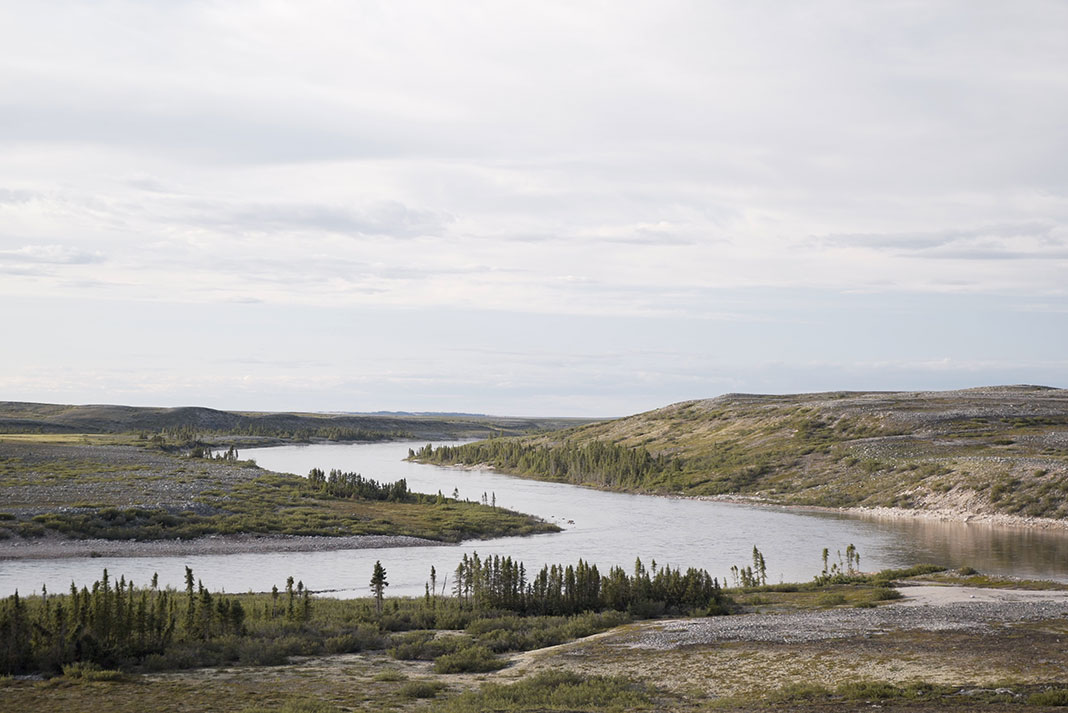
 paddlingmag.com
paddlingmag.com




